- Home
- slideshows
- miscellaneous
- 10 things you didn't realize teachers have to buy with their own money
10 things you didn't realize teachers have to buy with their own money
Classroom décor can end up costing a lot if teachers want to create a welcoming learning environment.

Classroom organizers like paper baskets, folders, and bins are not typically provided to teachers, so they have to purchase them themselves.
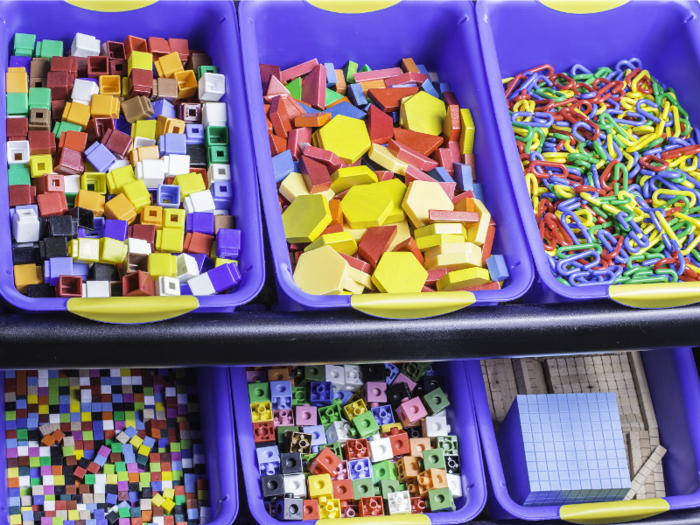
Just like decorations, many classrooms aren't equipped with any organizational staples teachers might need. This often includes paper baskets for filing things like homework and permission slips, or bins for extra supplies.
Sometimes, though, the things teachers bring in for organization are a little bigger.
Katie Niagara, a third-grade teacher from Pennsylvania, said she bought shelves to install in her classroom — something other teachers reported doing as well.
They said that without extra shelving, there simply aren't enough places to put all the things they need to keep their room in order.
It's basically expected that teachers will buy classic office supplies like paper, pens, and sticky notes.
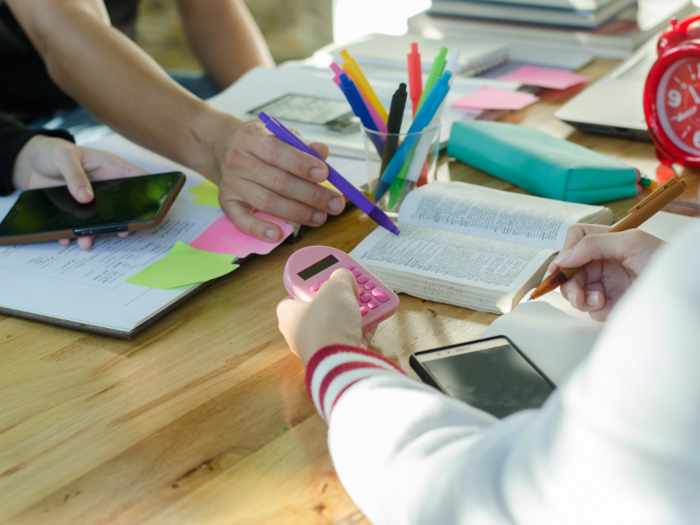
Perhaps less surprising is the fact that teachers must bring in the supplies that they keep on their own desks, but the scope of what this includes may still cover things you'd never think of.
For example, Niagara said she supplies her own Post-it notes, stapler, tape dispenser, scissors, and even a printer for her classroom desk.
Van Ness also told Business Insider that for some teachers, bringing these things in comes down to a matter of personalizing their rooms, sort of like an extension of the decoration process.
Other decorations teachers bring in for their desks are also included in this category — paperweights, name displays, and other desk knickknacks help make a teacher's desk feel friendlier, for both the teacher and the students.
It’s common for teachers to bring extra supplies for their students just in case they forget their supplies.
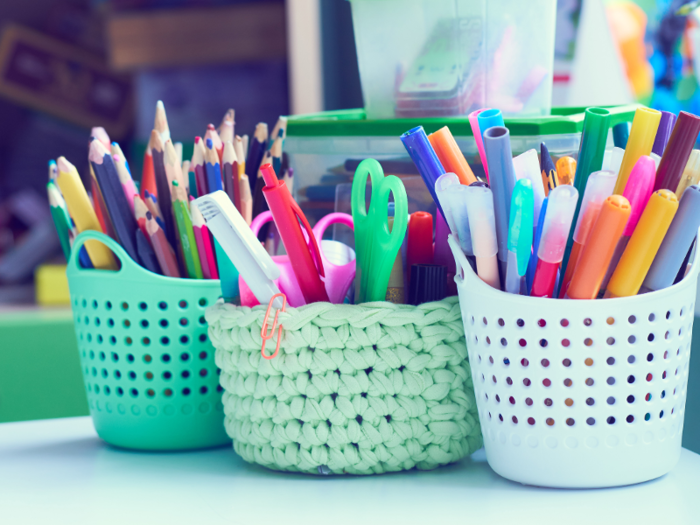
One other common expense for teachers is the spare supplies they buy for students.
Stephanie Kay, a middle-school learning support teacher from Pennsylvania, said the most common ones include "pencils, whiteboard markers, whiteboard erasers, notebooks, art materials like crayons and colored pencils, and lined paper."
These may seem like small items, but when you're trying to purchase enough of these items that all of your students have access in case they run out or forgot them, the costs can really add up.
To provide a variety of reading options for their more curious students, teachers will create their own classroom libraries by purchasing books themselves.
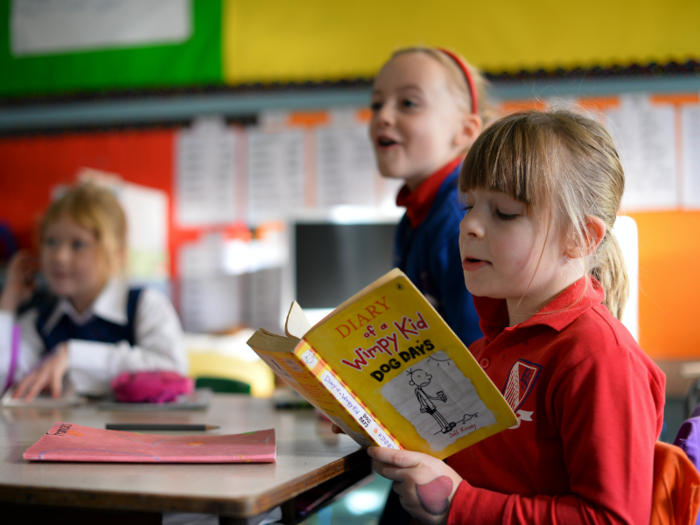
You'd be hard-pressed to find a classroom, especially an elementary school classroom, without a large collection of free books for students to borrow. The school will usually provide books that are required by the curriculum, but it's highly recommended, sometimes even required, that students do more reading than that during the year.
"Schools often rely on donations (and) gifts for independent reading books," Van Ness said. "But I know several teachers who bring in their own books, or books they've gotten from thrift stores and garage sales, for kids to borrow. In my school, where we don't have an official school library, this is especially useful in getting kids exposed to different kinds of books outside of the general classroom shelves."
Teachers will often purchase supplemental materials to help students struggling to grasp the curriculum. These additional resources are not always subsidized by schools.
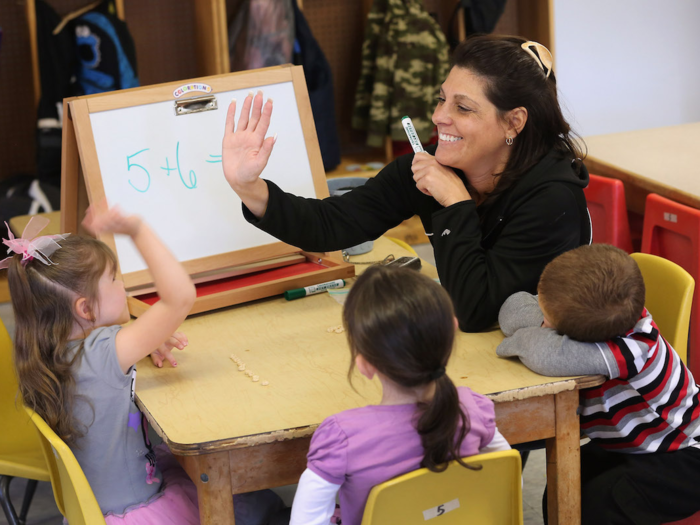
Teachers follow a curriculum, and create their own lesson plans, but for some students, this is not enough for them to truly grasp the material.
"Usually curriculums will give you one, maybe two ways of teaching a lesson. A lot of kids learn in different ways so you need to adapt to their needs," Tori Van Horn, a second-grade special-education teacher from Pennsylvania, said.
"I teach and support with all subjects that my students struggle in, and if a student doesn't understand the concept the first time it's taught, and the first method you taught them isn't working, you'll want to find new material to help them, whether that's a book using a specific sight word, or a more interesting way to learn the letter A."
Materials for motor skills lessons like beads and blocks oftentimes are not provided to teachers.
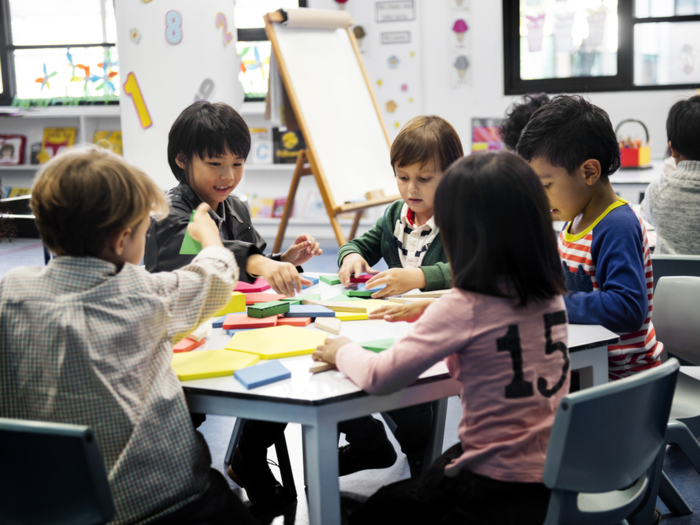
Supplemental materials don't just include supplemental lessons. Sometimes tactile activities are needed to help kids learn lessons, or, in the case of kindergarten and preschool classrooms, learn motor skills.
"I bought small manipulative toys for motor skills practice," Rosie Wilson, a preschool teacher from Pennsylvania, said. "Beads and strings. Beads are usually supplied, but younger children need larger sizes that are more appropriate for them."
As preschoolers tend to vary in development, it is important to have that variety in sizes. Not only are younger preschoolers more likely to swallow smaller objects, it can also be much harder for their hands to manipulate them than it is for some of their classmates who are just a little bit older.
Toys and games are key to the development of preschoolers and kindergarteners, but not typically given to teachers by their schools.
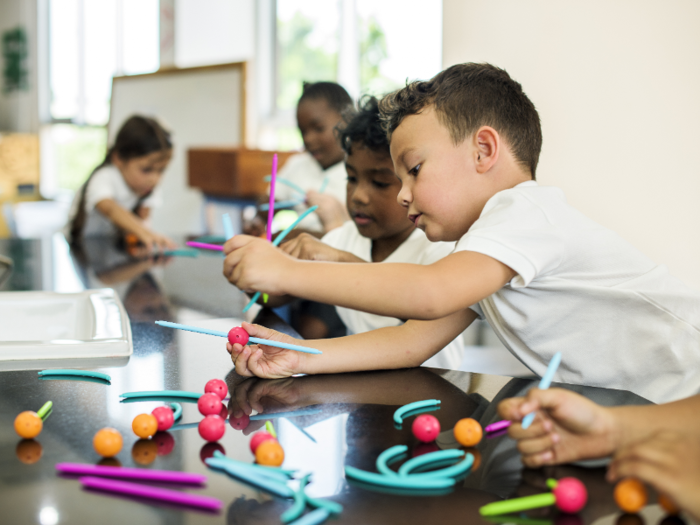
Another thing that is unique to preschool and kindergarten classrooms is that, like a classroom library, they also usually have a classroom toy bin.
Children between the ages of 2 and 6 have shorter attention spans, and their learning is still largely social, as well as academic. As such, toys and games are an integral part of their classroom environments. And just like classroom libraries, classroom toy collections are largely donated or brought in by the teachers.
"Just about every single toy that my daughter had from age 3 to 5, I brought to work," Wilson said. "Castles, toys, and all her dress-ups — instead of selling them, I donated them to our school and our classrooms. Happy Meal toys she didn't like went into the treasure box."
Older grade-school classrooms sometimes also have teacher-donated game libraries for students, in case they have free time or have to have recess indoors. These are usually more educational board games like Scrabble or Scattergories.
Music teachers often purchase and bring in extra musical supplies like tambourines to get students engaged with the material.
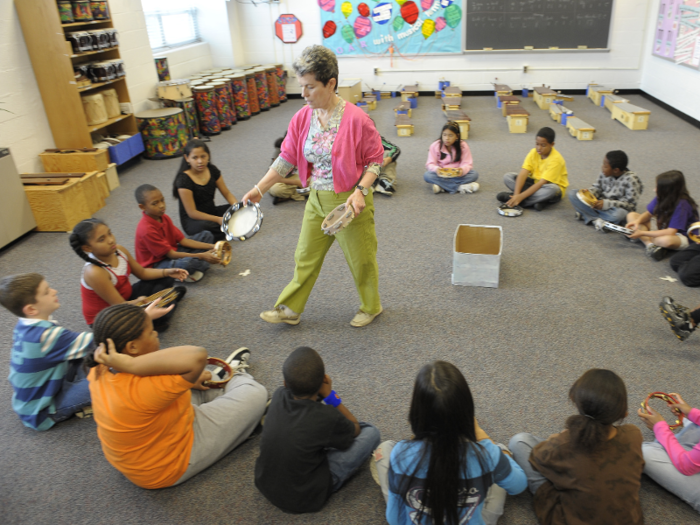
While most of the examples mentioned so far are things that nearly all teachers have to purchase, there are some things certain that teachers of specific subjects, like music, have to buy that others don't.
Devin McGuire, a middle school music teacher from New Jersey, said although his school provides the instruments, he's responsible for fixing them in many cases.
"I haven't had to buy new parts yet, but I anticipate it. I teach 11-year-olds after all," he said. "I also have to pay my concert pianist out of my own pocket."
This is by no means universal. Schools have widely varying budgets when it comes to special subjects like music and art. Some schools have multiple music teachers, so a concert pianist might be unnecessary. Others don't even have instruments for students to use, and must rely on donations from teachers or the community.
Positive reinforcement through prizes has been proven to be effective in encouraging students, so teachers will often purchase these rewards out of pocket.
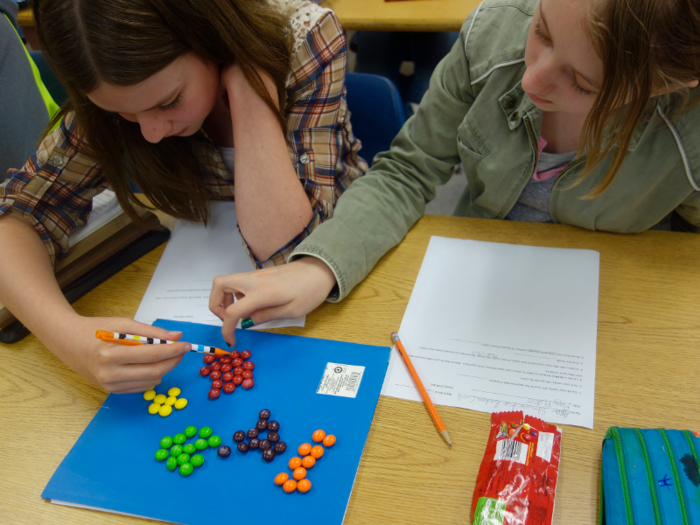
It is proven that students respond well to positive reinforcement, so one thing nearly all teachers do purchase is prizes for students.
Kay gives out prizes like candy in her classroom on a regular basis to encourage students to participate and reward them for their work.
"If I oversee a student and they have a behavior plan, and they hit a certain benchmark with their sheet every week or so, I'll get them something to let them know they are capable of doing well and to encourage them to keep going," she said.
On these special occasions, she said, "I'll buy the kid something they could find at Five Below."
These gifts are more personalized, and help the child feel recognized and proud of their accomplishments.
Popular Right Now
Popular Keywords
Advertisement